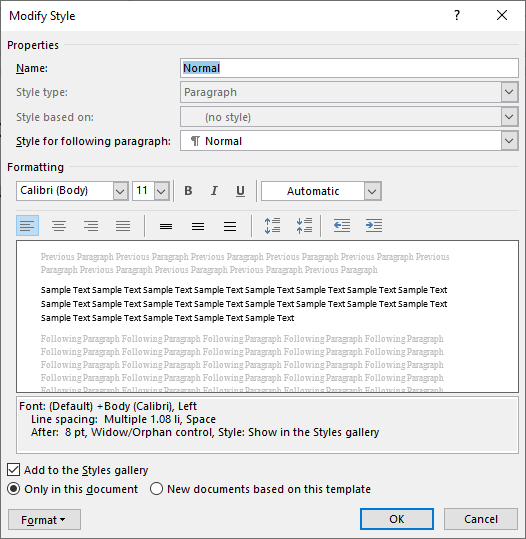

Or maybe you don’t want to hyphenate a word in a particular phrase but instead want to keep the phrase together on one line. Or maybe Word hyphenates a word in a way that proves humorous or crude given the surrounding words. You may find that Word has hyphenated a proper noun, which we typically don’t hyphenate. Proof for end-of-line hyphens after all other formatting and text changes have been made. If you change your other formatting options, you’ll have to proof again for hyphenation since it’s likely that different words and different lines of text will be hyphenated after the change. Make sure page size, margins, line spacing, font type or size, widow/orphan control *, and even the first-line indent size are the way you want them before you edit for hyphenation. However, don’t start changing hyphenated words until you’re absolutely sure that the rest of your formatting is set. So you’ve got to make some rules for your document and then change some of the hyphenated words. But you won’t want all the words that Word hyphenates at the ends of lines to actually be hyphenated. Once you turn hyphenation on, you’ll be able to see where words break at the ends of lines. I suggest a maximum of two, but you may not want two hyphenated lines in a row or you may want to allow three. You can limit the number of hyphenated lines in a row under hyphenation options.

Still, using hyphenation for the document as a whole is probably the best option in almost all instances. Chapter titles and subtitles or subheadings, however, will likely be centered or aligned left.įor nonfiction print books, it’s likely that you’ll have a variety of font styles, including text that isn’t justified. For fiction, this means that almost all of your text will be justified, with even edges on the left and right.
HOW TO DISABLE WIDOW ORPHAN CONTROL GOOGLE DOCS PROFESSIONAL
Hyphenation at the ends of lines gives print formatting a polished, professional look, and it can reduce page count, both positives for self-publishing writers. Adobe’s InDesign apparently has even more options for hyphenation to give your self-published book the look of a traditionally published book, but Word may be sufficient for your needs. Setting up hyphenation for a document is easy in Word, and you do have some hyphenation options. What this means is that if you’re formatting a book for print, you need to address end-of-line hyphenation. Pick up almost any traditionally published book, however, and you’ll find hyphenated words at the ends of lines, meaning that more text has been added to each line, reducing the extra spacing. Justification also creates extra spaces between words and sometimes rivers of white space that run down the inside of our paragraphs. Yet when we format for print books, we justify the text, which gives us even margins left and right. The hyphenation feature in Word is typically turned off by default, so many of our Word docs aren’t hyphenated and we get used to seeing text that doesn’t break at the ends of lines.Īlso, many of our documents are aligned left, leaving jagged edges on the right. In this article we’re going to address hyphenation at the ends of lines in print books. We’ve looked at a handful of issues concerning the formatting of print books for those who are self-publishing- First Steps in Formatting for Printand Using Font Styles When Formatting for Print. Septemby Fiction Editor Beth Hill last modified September 23, 2016


 0 kommentar(er)
0 kommentar(er)
